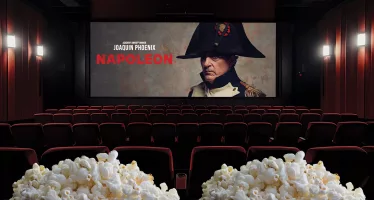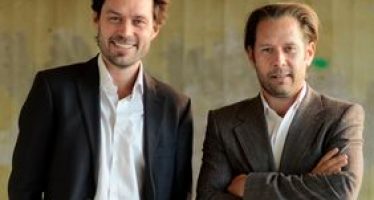Zaha Hadid (1950-2016): “I Don’t Design Nice Buildings”
 Zaha Hadid orphaned this world on March 31 and left it waiting for great works that now will never be. Architects bloom late in life and, while a prodigy, Ms Hadid was widely expected to pique in the years ahead. The Iraqi-born architect, credited with demolishing geometry, passed away, aged 65, in Miami.
Zaha Hadid orphaned this world on March 31 and left it waiting for great works that now will never be. Architects bloom late in life and, while a prodigy, Ms Hadid was widely expected to pique in the years ahead. The Iraqi-born architect, credited with demolishing geometry, passed away, aged 65, in Miami.
Ms Hadid led a double life as a gifted painter, drawing inspiration from the Russian Suprematist School famous for celebrating art as an emotion rather than a way of depicting people or objects. Much like her buildings, Ms Hadid’s paintings defy gravity and convention with floating skyscrapers and other suspended objects hovering over cityscapes. As an architect, Ms Hadid confessed to a manifest lack of interest for engineering, producing curvaceous designs that were deemed impossible to erect – and often were.
For almost two decades, Ms Hadid was known as a paper architect, gaining a reputation as a diva impossible to work with and liable to throw a tantrum of magnificent proportions when challenged. In 1996, her fate seemed sealed when she was summarily dismissed as the lead designer of the new opera house in Cardiff.
An impromptu coalition of the bored and boring – assorted politicians, commentators, and other dullards – conspired against what would undoubtedly have become the most radical and compelling building in Britain. It was never built. In its place an adorned rock was erected which now goes by the name of Wales Millennium Centre. However, Ms Hadid did enjoy the last laugh, when her “double pebble” design for Cardiff saw light in China as the Guangzhou Opera House – hailed by the New York Times’ art critic Nicolai Ouroussoff the “most alluring opera house built anywhere in the world in decades.” That is what vindication looks like.
As a structurally ambitious architect endowed with a geometrically fractious tendency, Ms Hadid followed in the footsteps of Brazil’s Oscar Niemeyer who was one of the first to become a sculptor of monuments. Attracted to free-flowing sensual curves, shunning the hard and inflexible of straight lines and sharp angles, Ms Hadid happily straddled the frontier that separates genius from madness. Quite unapologetic, she stuck to her riotous ways and before long build up a practice with over 400 staff working on close to a thousand projects in 44 countries.
Not without her detractors – Guardian columnist Simon Jenkins thought her buildings more suited to deserts than urban settings – Ms Hadid in 2004 went on to bag the Pritzker Prize, architecture’s most prestigious award. In 2011, she received the Stirling Prize for her design of the Evelyn Grace Academy in Brixton. Earlier this year, Ms Hadid was presented with the Royal Gold Medal awarded annually by the Royal Institute of British Architects.
To her remaining critics she answered, “as a woman, I’m expected to want everything to be nice, and to be nice myself. A very English thing. I don’t design nice buildings. I don’t like them.
I like architecture to have some raw, vital, earthy quality.” Funny, frank, and outrageous to a fault, Ms Hadid was hard not to like – she made sure of that, and if failed, would usually walk out. Last September, Ms Hadid exited the Today show prematurely after the presenter suggested her design for the Tokyo 2020 Olympic Stadium had been cancelled because of cost overruns – in the process re-establishing herself as the lovable diva of architecture.
Always provided with an unmistakable wow-factor, Ms Hadid’s designs became the stock in trade for any city ambitious enough to make a splash. Frank Gehry unwittingly started that trend with his design for the Guggenheim Museum which not only turned into an instant landmark but also placed Bilbao on the map. Ms Hadid refined her trade at the Office of Metropolitan Architecture – the famed Rotterdam studio founded in 1975 by Rem Koolhaas, the Dutch architect who famously managed to transform a police station into an objet d’art (Almere 1982-1985).
Ms Hadid caught on quickly and answered in 1993 with her now iconic fire station on the grounds of the Vitra furniture factory in Weil am Rhein in Germany. The structure, made of the cast concrete and glass walls favoured by the modernists of yore, is of a shape also found in many of her Peak Club Paintings – one of forceful fracture.
Finding herself in way out front of even the most daring avant-garde did not cause Ms Hadid any discomfort; she relished not just the limelight, but also being uniquely different and – why not? – courageous. That, in fact, became her hallmark.
Ms Hadid’s photogenic work attracted patrons who were less interested in substance and functionality than in high profile and impacts. Subtlety was just not her thing. However, Ms Hadid had eye for detail: the curves and breaks of her designs anticipated the visitor’s or user’s visual experience – her buildings aim towards the generation of a self-image.
A lifetime of globetrotting, sleep deprivation, chain smoking, and a volatile temperament ultimately took its toll. While recovering from bronchitis at a Miami hospital, Zaha Hadid suffered a heart attack. She left just as she had become venerable, being able to pick and choose the best offers from the jobs submitted. Just as Oscar Niemeyer did before her, Ms Hadid reminded the world that modern architecture can afford to be close; to belong to a place rather than impose on it. For imparting that lesson, Ms Hadid is owed a debt of gratitude.
You may have an interest in also reading…
Movie Review – Napoleon: Flawed but Fascinating Historical Tribute to an Enigmatic Emperor
Ridley Scott’s Napoleon gets the mood just right, captures all the emotion and torment … but sometimes takes liberties with
Mikkelson Brothers: Doing Good through a Chance Meeting
Danes David and Christopher Mikkelson are solid heroes for the humble and conscientious work they have done in establishing Refugees
The Unseen Shift: How Creeping Normality Rewrites Our World
Gradual, barely perceptible shifts can normalise the unacceptable—reshaping everything from corporate decision-making to ecosystems and civil discourse. Understanding “creeping normality”



















































































